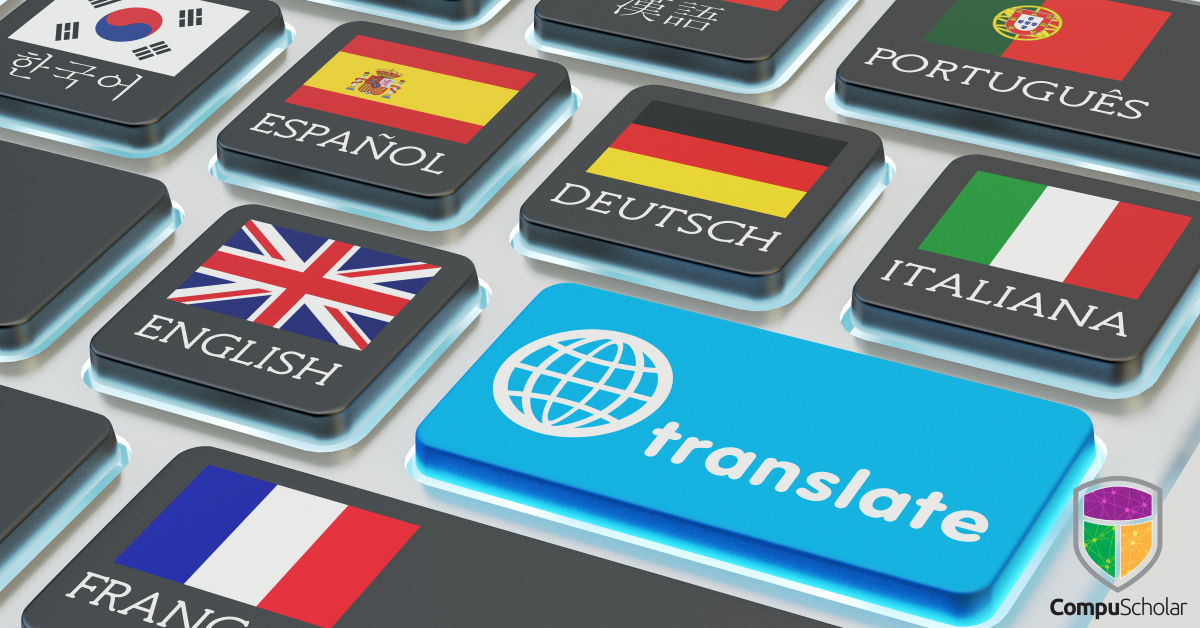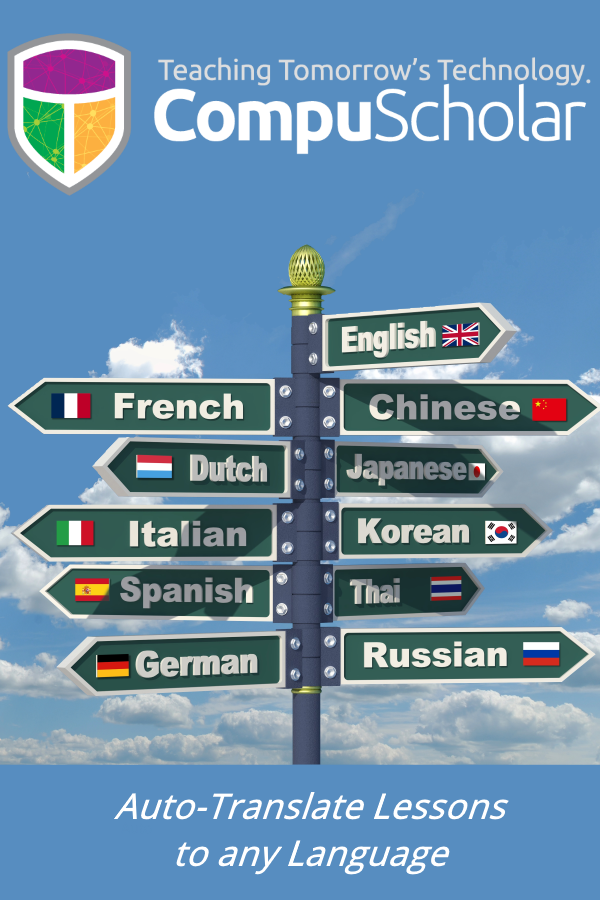
A wide variety of students use CompuScholar's computer science and digital literacy courses, including ESL students that are still learning English. While our online material is published only in English, today's automatic translation tools make it very easy to convert that content to Spanish and other languages.
Broadly speaking, the "text" content in CompuScholar's courses consists of the following HTML pages:
- Course table of contents and chapter descriptions
- Lesson Text pages
- Quizzes and Tests
Maintaining parallel versions of those pages (e.g. in English and Spanish) would short-change students from other cultures that were not selected for manual translation. Therefore, we have opted keep our material in English and document how to use automatic translation services to instantly convert our content into any desired language. We recommend using Google Translate or similar auto-translation services to convert the initial HTML into a student's native language.
Installing and Using Google Translate
 To install Google Translate in your Chrome browser, go to the Chrome Store, search for "Google Translate", and select the app published by translate.google.com. Other translation apps are available and may work as well, though we've only tested Google Translate.
To install Google Translate in your Chrome browser, go to the Chrome Store, search for "Google Translate", and select the app published by translate.google.com. Other translation apps are available and may work as well, though we've only tested Google Translate.
Once installed, you can simply right-click on any HTML page and translate it to one of 100 different languages. This approach works for any HTML page within the CompuScholar system, including the main course navigation pages, the lesson text, quizzes and tests, and so on!
You will notice that certain elements within our lesson text will not translate intentionally. Code snippets, live coding boxes and snapshots of results are marked with a flag that tells Google Translate to skip them. Code must naturally remain in English to preserve keywords and the language syntax, and the corresponding output examples should match the code.
There are a few important things to consider when using this kind of translation service.
- An auto-translation may not produce results equivalent to a hand-crafted, manual translation. That's the trade-off you make for getting instant results in any language - use at your own risk!
- If you are not using the Chrome browser or can't install the Google Translate app, you might consider an alternative translation service (there are multiple).
- Of course, if you find a problem with a translation, CompuScholar can't fix that problem, as the translations are produced by 3rd party services.
Looking Ahead
Consuming our "text" content is generally sufficient for students to learn all required skills. Our Instructional Videos, while popular with students, are considered optional supplements and are not required to complete any course. Nonetheless, we know our ESL students would like to see the video content in other languages as well.
Our plan is to add a specific Spanish closed caption track on each video, so you will be able to select between English and Spanish captions. While that will not support every language, it does account for our most-requested language. Students can simply mute the audio track and read the Spanish sub-titles while watching the video. These new captions are not yet available - stay tuned to announcements in 2021!
For More Information
We demonstrate the Google Translate features during our November / December, 2020 Professional Development webinar. Please visit our webinar page to view that video walk-through. As always, please Contact Us if you have questions!